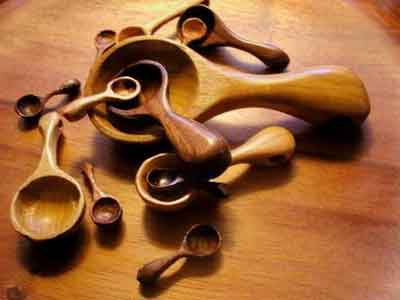
Here's My Woodcarving!
by Preston Woodruff
Brevard, NC
Click on any picture to see a larger version.
I appreciated your reprinting of the
1985 Wallace Macfarlane article on treenware
. Treenware still thrives in small shops all over America, made by woodworkers who share Macfarlane's unease with factory-made multiples turned out to machine-shop tolerances.
I leave the lathe turning to others, preferring to saw, chisel, and scrape out dough bowls, trays, wooden spoons, and the occasional dulcimer in the Appalachian tradition. Downed trees are plentiful here in western North Carolina, so I rarely have to buy wood (but I've learned a lot about air drying).
Like Macfarlane, I sell locally, but the Internet has changed craft marketing in a big way. My Atlanta daughter Jenn, a successful web businesswoman urged me to create a website, and with the help of her computer-guru husband I did:
www.appalachiantreeworks.com
. Macfarlane couldn't have imagined that back in 1985, but I hope he's still around to take advantage of it now.
Western North Carolina -- my spur of the Appalachian mountain chain -- holds on to its woodworking traditions. Antique shops and museums display century-old dough bowls, wooden spoons and handmade hickory chairs. But traditions, at least the living ones, change to allow for new ideas. I like both of those aspects of Appalachian woodworking.
I'm lucky to live in a place with beautiful native hardwoods. Landowners who have to remove large trees because of age or disease often make sure that local woodworkers have a chance to take some of the wood home. I don't turn bowls, but lathe artists around here do work that can take your breath away.
I show my work in The Red Wolf Gallery here in Brevard, and The North Carolina Crafts Gallery in Carrboro, near Chapel Hill. I like to think of my dulcimers and treenware heading out across the country, reminding people that Appalachia is a special place, both for its old traditions and its new artists.
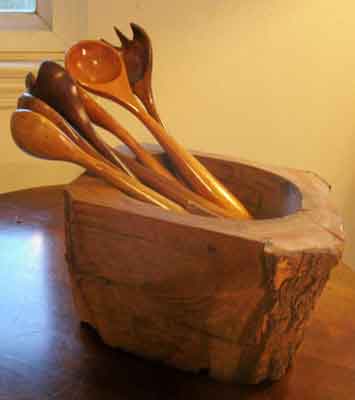
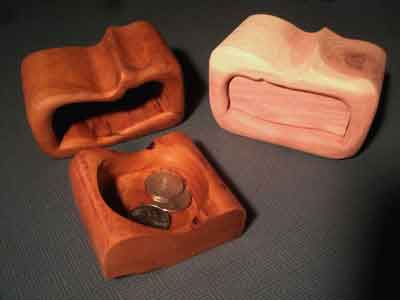
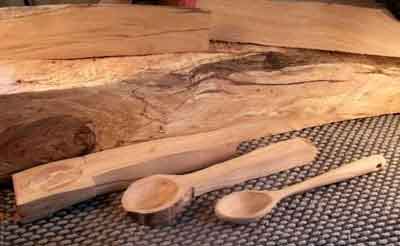
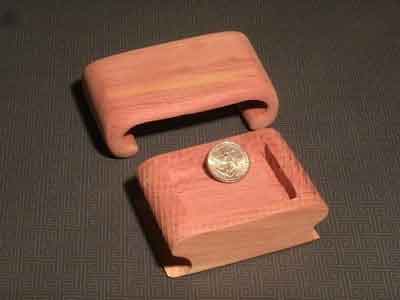
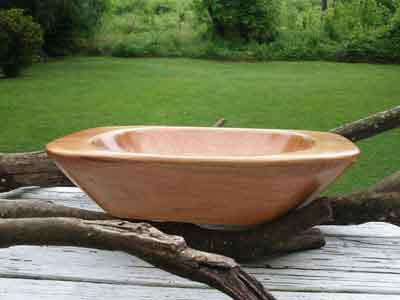
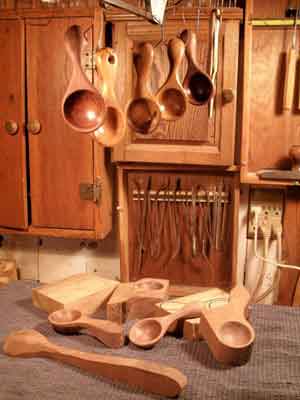
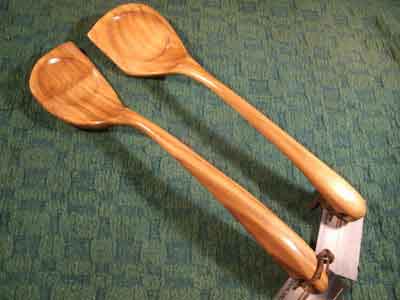
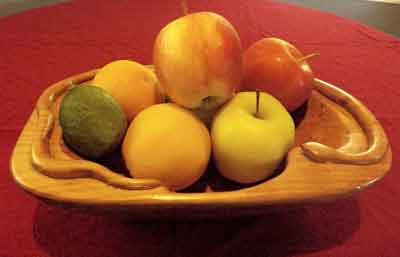
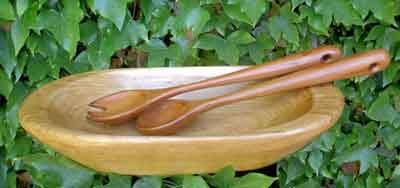
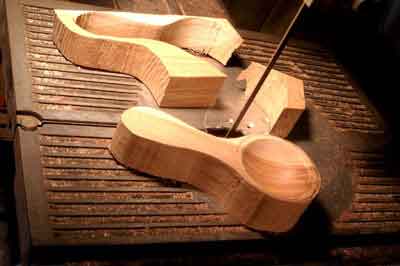
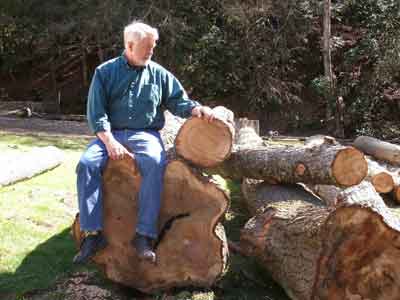 Local Woods: Western North Carolina forests abound in walnut and cherry. Local landowners are often generous with logs from trees that must be removed. After seasoning, splitting and sawing, they become dough bowls and wooden spoons in the Appalachian Tree Works shop.
Local Woods: Western North Carolina forests abound in walnut and cherry. Local landowners are often generous with logs from trees that must be removed. After seasoning, splitting and sawing, they become dough bowls and wooden spoons in the Appalachian Tree Works shop.
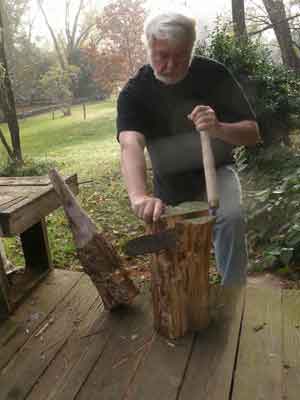
Splitting a Walnut Log: Splitting a log rather than cutting it reveals where the wood's strength lies. You follow that strength when you carve out a spoon or bowl.
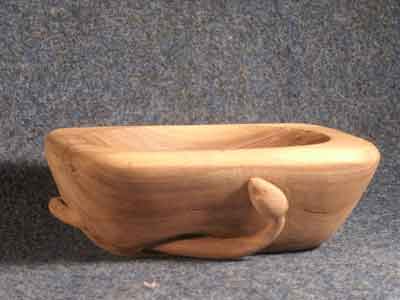
Snake Bowl: Small walnut bowl with carved snake
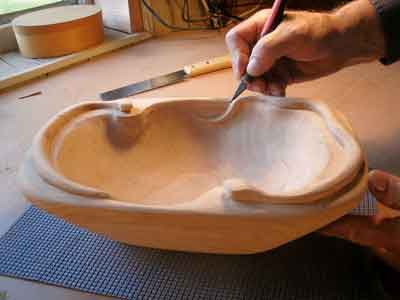
A photo of another recent bowl in local Transylvania County cherry.
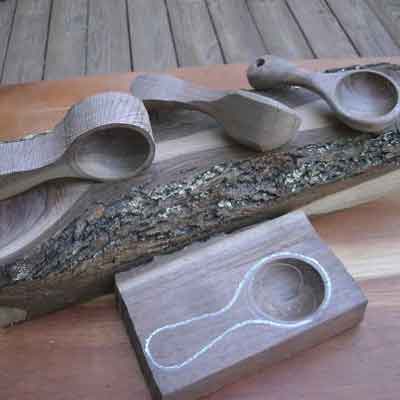
Scoops & Log: Coffee scoops in local walnut, cherry, butternut and dogwood are popular items. Here's the process, from log to completed scoop.
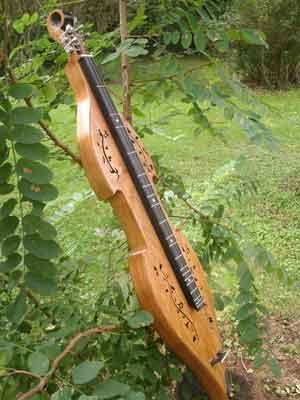
Fiddle Dulcimer: 4-string dulcimer in local Transylvania County cherry with ebony trim. I imagined what it would be like if you stretched the body of a violin out like taffy being pulled. This is what I came up with.
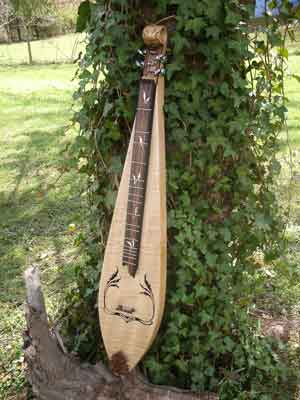
Art Nouveau Dulcimer: In flamed maple, with ebony trim. I joined the traditional teardrop mountain dulcimer shape with art nouveau soundholes and inlay.
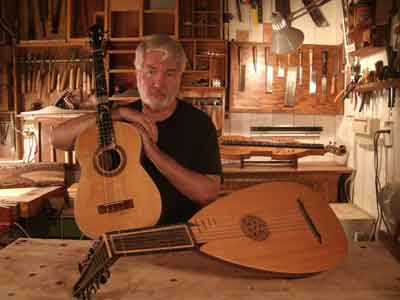
You can email Preston at
prestonwoodruff@gmail.com
or check out his website at
www.appalachiantreeworks.com
.
Would you like to see your carvings in this column? We invite you to
SEND US PHOTOS
of your
favorite woodcarving projects along with captions and a brief history of your woodcarving. (Email
photos at 800x600 resolution.) Receive a $50 store gift card if we show your carving work in a
future issue!
Return to
Wood News
front page


